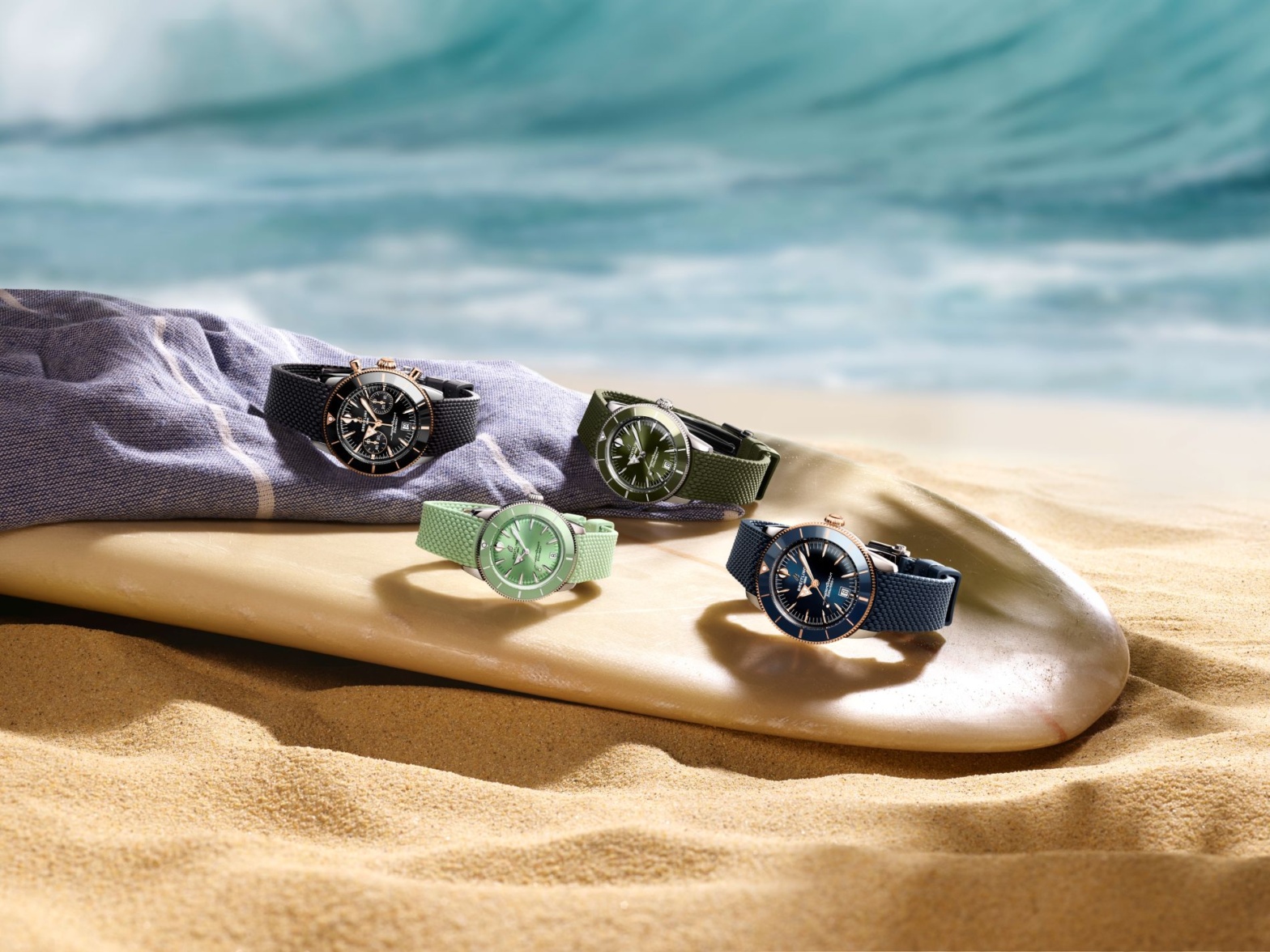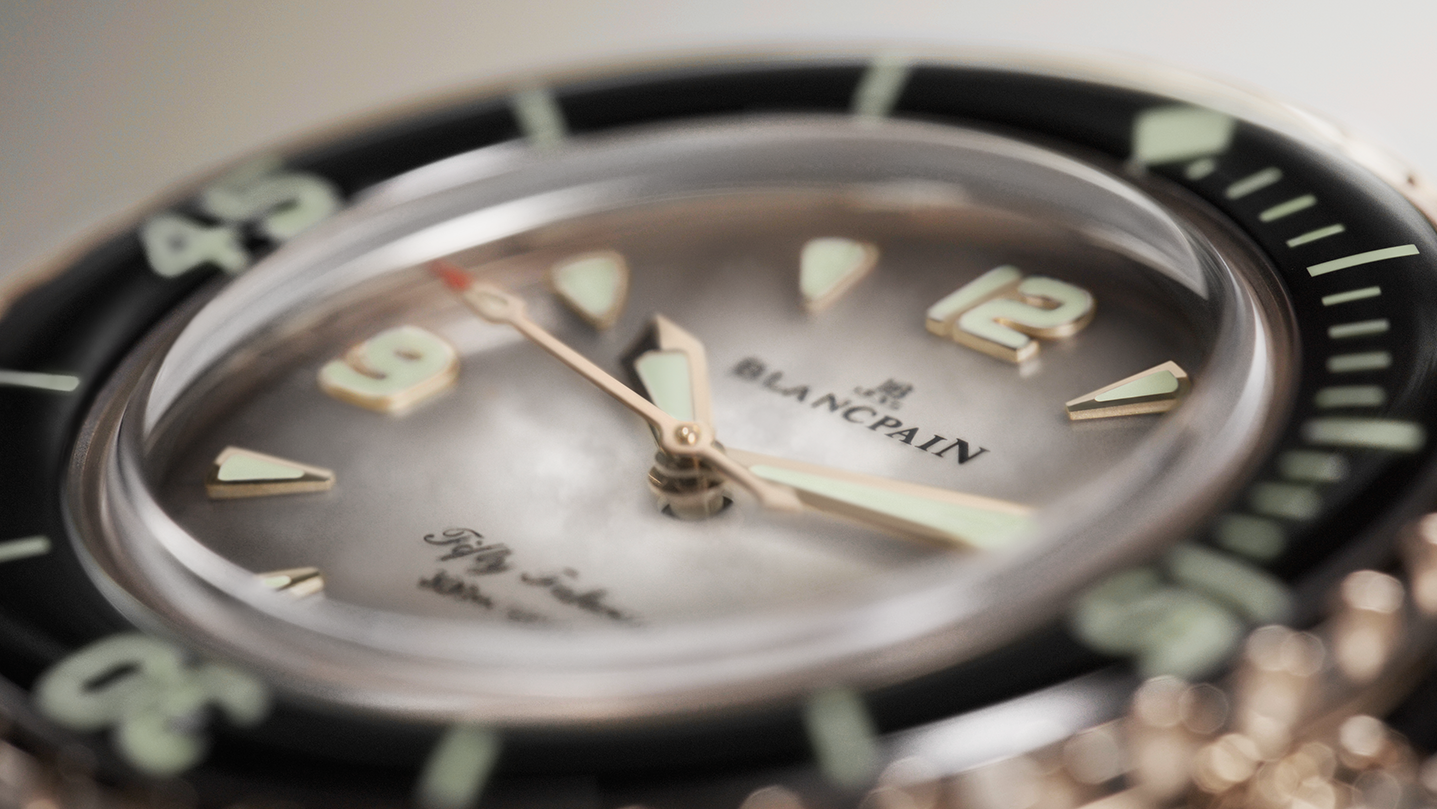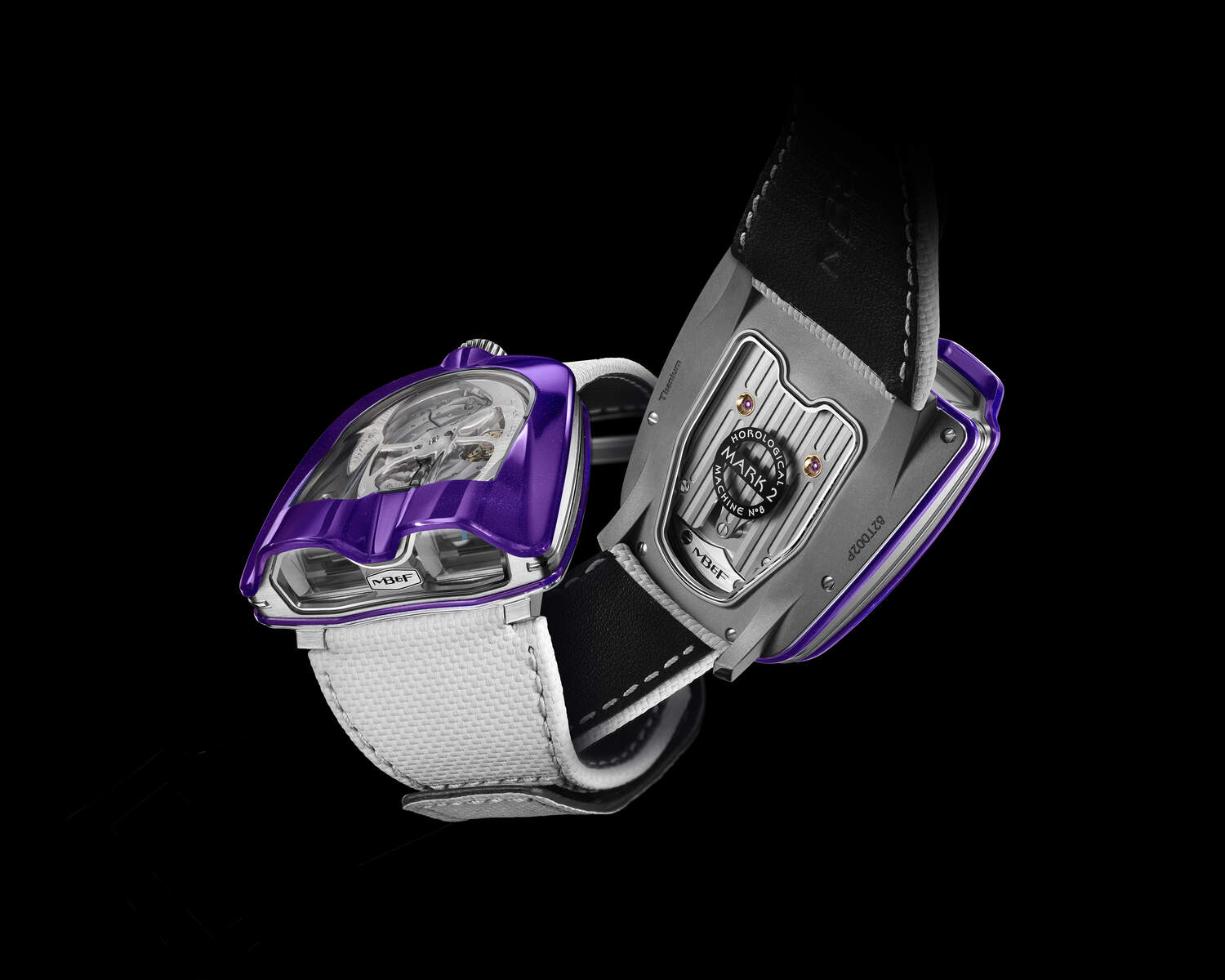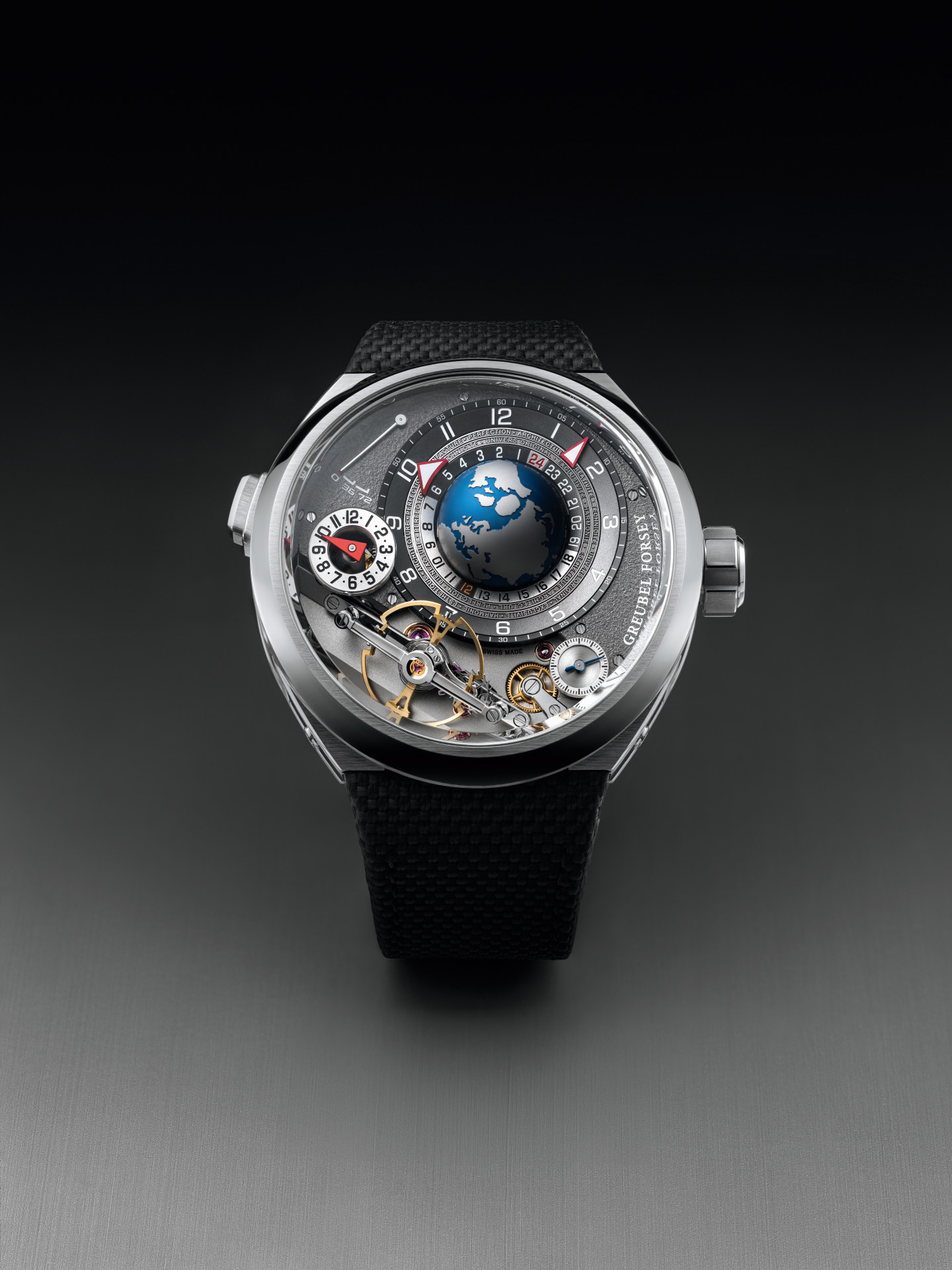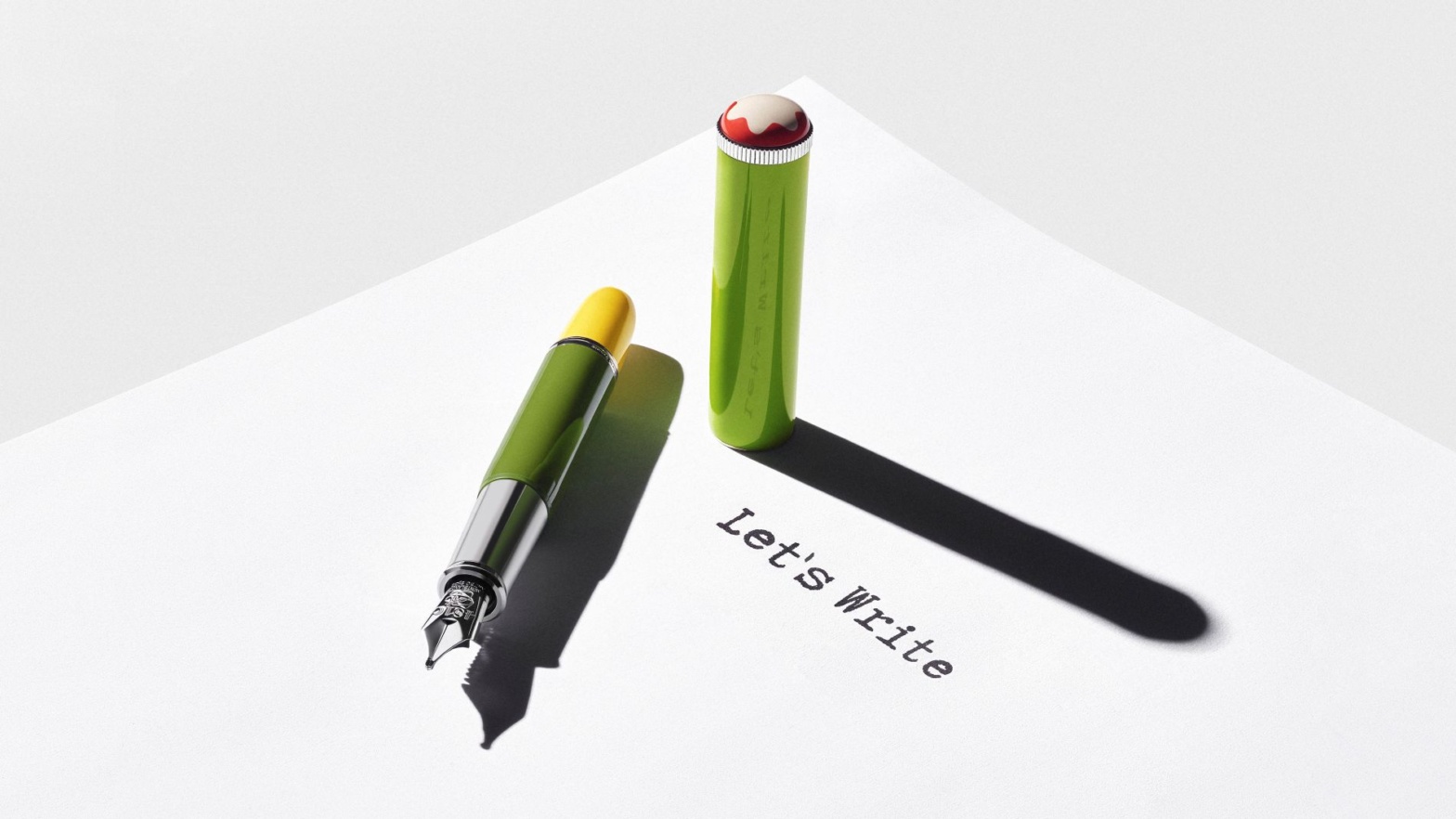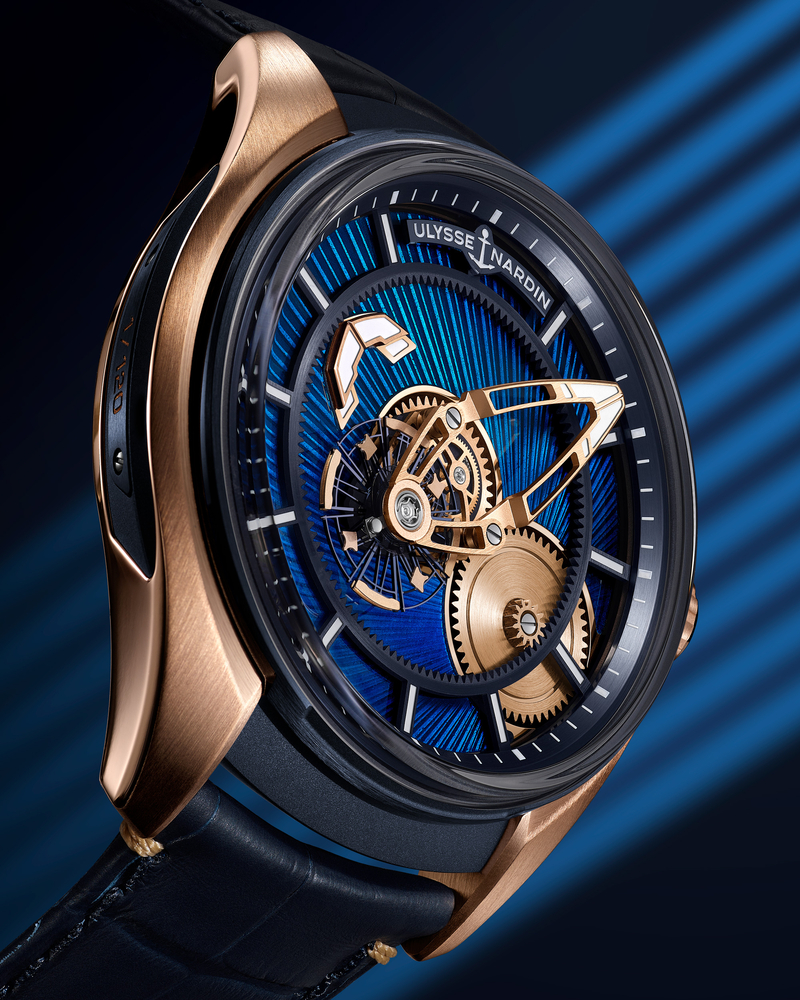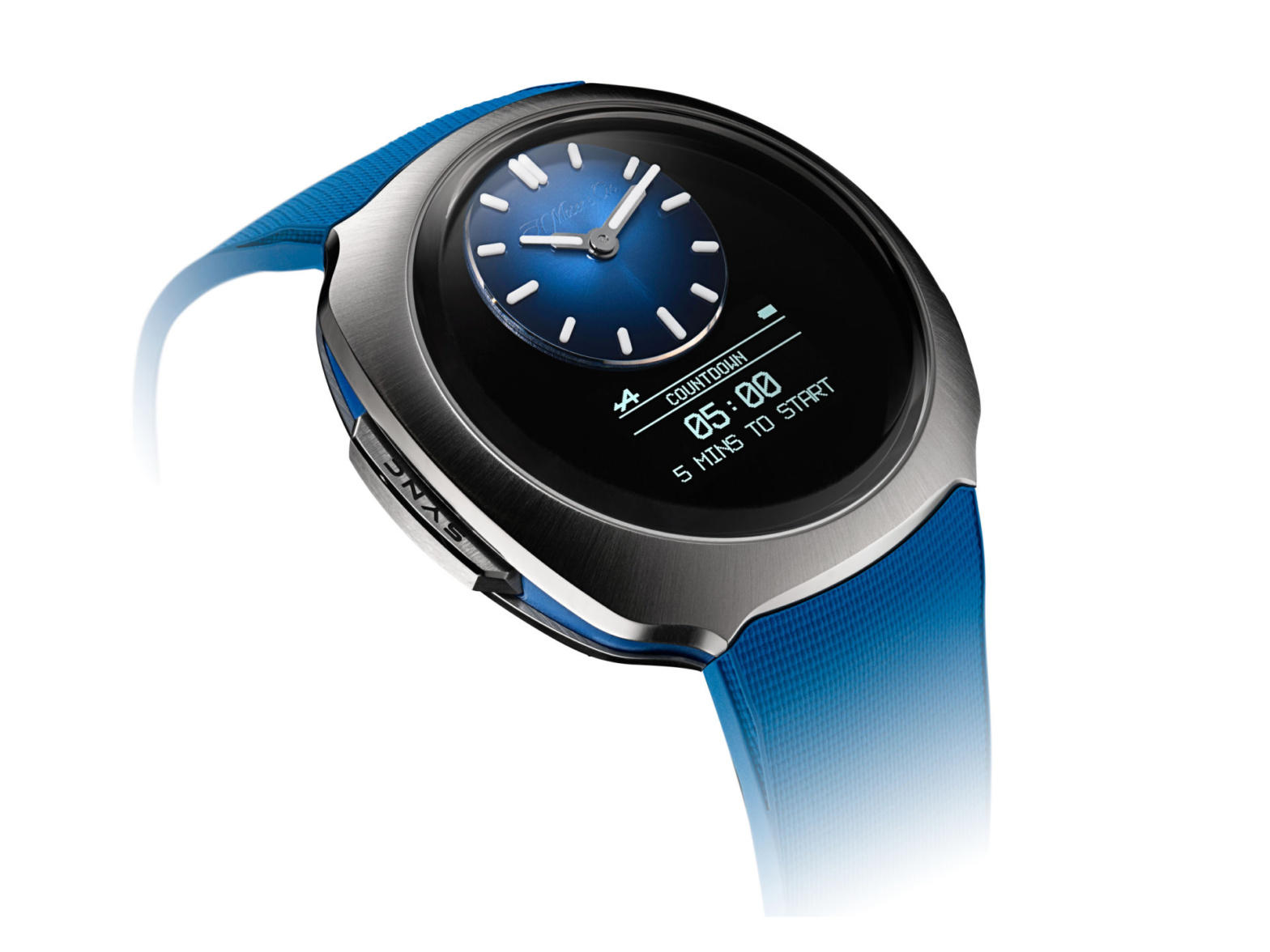Underlining the timeless modernity of the Reverso’s unique swivelling case and Art Deco design, Jaeger-LeCoultre presents two new versions of the Reverso Tribute Duoface Small Seconds. With a choice of pure black or vivid blue and a redesigned reverse dial, the new models pay homage to the coloured dials introduced on the earliest Reverso models of the 1930s.
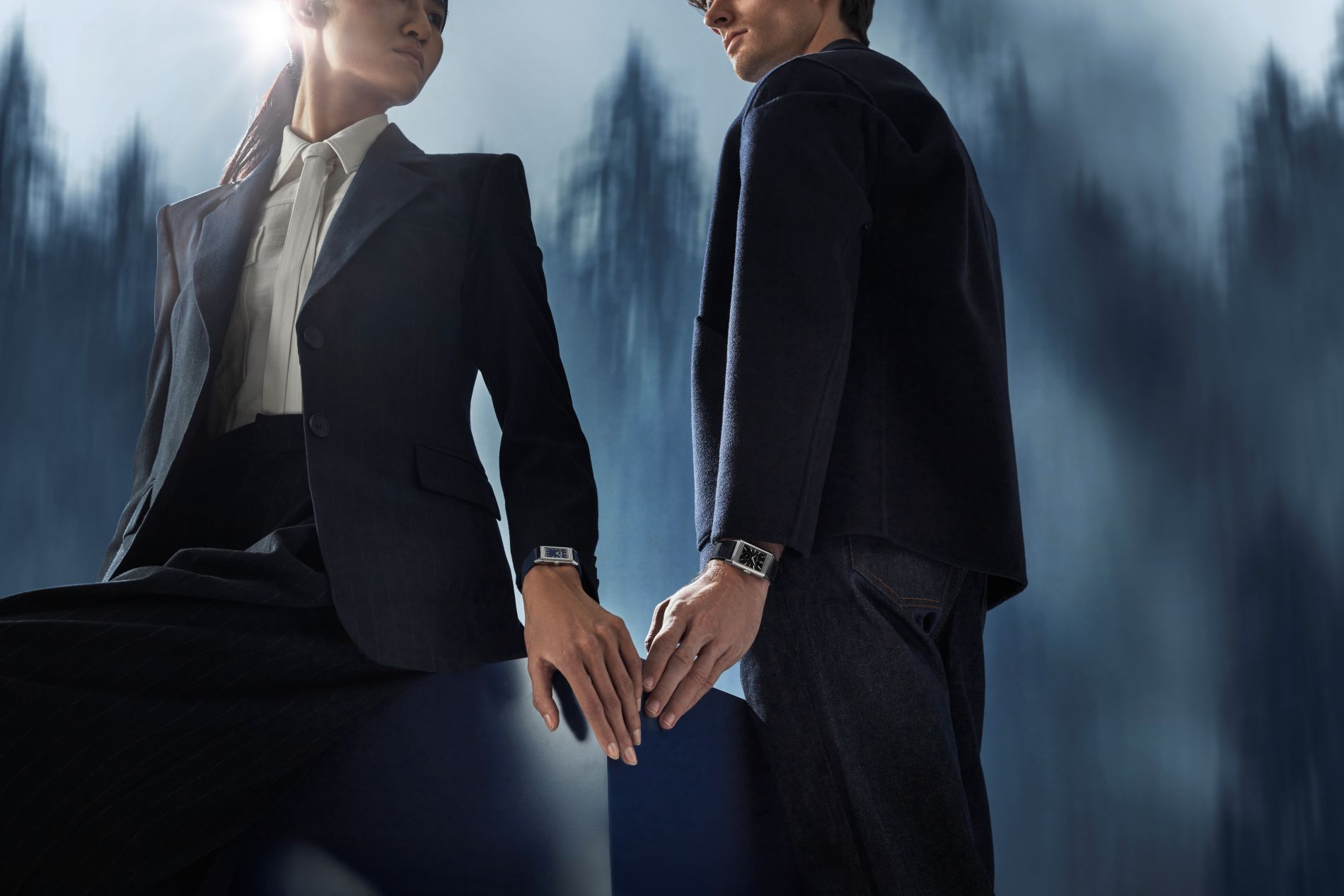
FROM POLO INSPIRATION TO TIMELESS ICON
Created in 1931, the Reverso was designed to meet the demands of the newly fashionable ‘sporting gentleman’. A challenge was set by polo-playing military officers in India during the British Raj of 1858-1947 to create a watch that could withstand the rigours of the polo field. The Reverso was the answer – a masterful integration of form and function. Quickly adopted by tastemakers from all walks of life, the Reverso soon transcended its original sporting purpose as new variations appeared – for both men and women. However, its iconic double-sided case (historical patent CH159982) and distinctive Art Deco lines have remained constant, making the Reverso one of the world’s most recognisable wristwatches.
The Reverso was born as a deft synthesis of style and function. Rooted in the Art Deco aesthetics, it also embodied a mechanical revolution allowed by La Grande Maison’s expertise. From the very beginning of its production, Reverso’s calibres were shaped to follow the curves of its rectangular case, an ingenious answer to maximise space used and therefore the precision of the calibre. In 1931, it was seen as a revolution in Haute Horlogerie: an unusual rectangular case, powered by shaped calibres, set in a dedicated casing ring to protect them from shocks, humidity and the passing of time.
This technical challenge, overtook by the Manufacture, was fully embraced in the beginning of the 1990s, when Jaeger-LeCoultre introduced high complications in Reverso. In 1994, the Maison launched the Duoface (historical patent EP0633514) – the first time the reverse side was used to host a second dial. More than just a stylistic contrast, its unique two faces opened new creative possibilities by introducing different functions on each face, transforming the Reverso into a true canvas for both artistic expression and horological ingenuity. The genius of this timepiece lies in its dual back-to-back dials, each with its own set of hands that rotate in opposite directions yet are driven by a single movement. The Duoface calibre employs a second gear train to reverse the rotation of the hands on the verso, enabling independent time adjustment on both faces. A gear connected to the front minute hand transmits motion to the reverse side, where a separate mechanism allows for time zone adjustments.
Building on this legacy, in 2025, the Reverso Tribute Duoface Small Seconds displays a different time zone on each dial. In addition, the front dial features a small seconds register and the reverse dial a 24-hour/night-and-day display. Shaped to fit the rectangular Reverso case, the hand-wound Calibre 854 is designed so that the minutes on both dials and the hours on the front dial can be adjusted by the crown, while the hours for the second time zone are adjusted by a small slider set into the top case-band. The slider is completely invisible, except when the case is released from the carriage to be flipped over, thus maintaining the perfectly sleek case design. A deeply etched sunray pattern on the inner surface of the carriage adds to the visual enjoyment of turning the watch over.
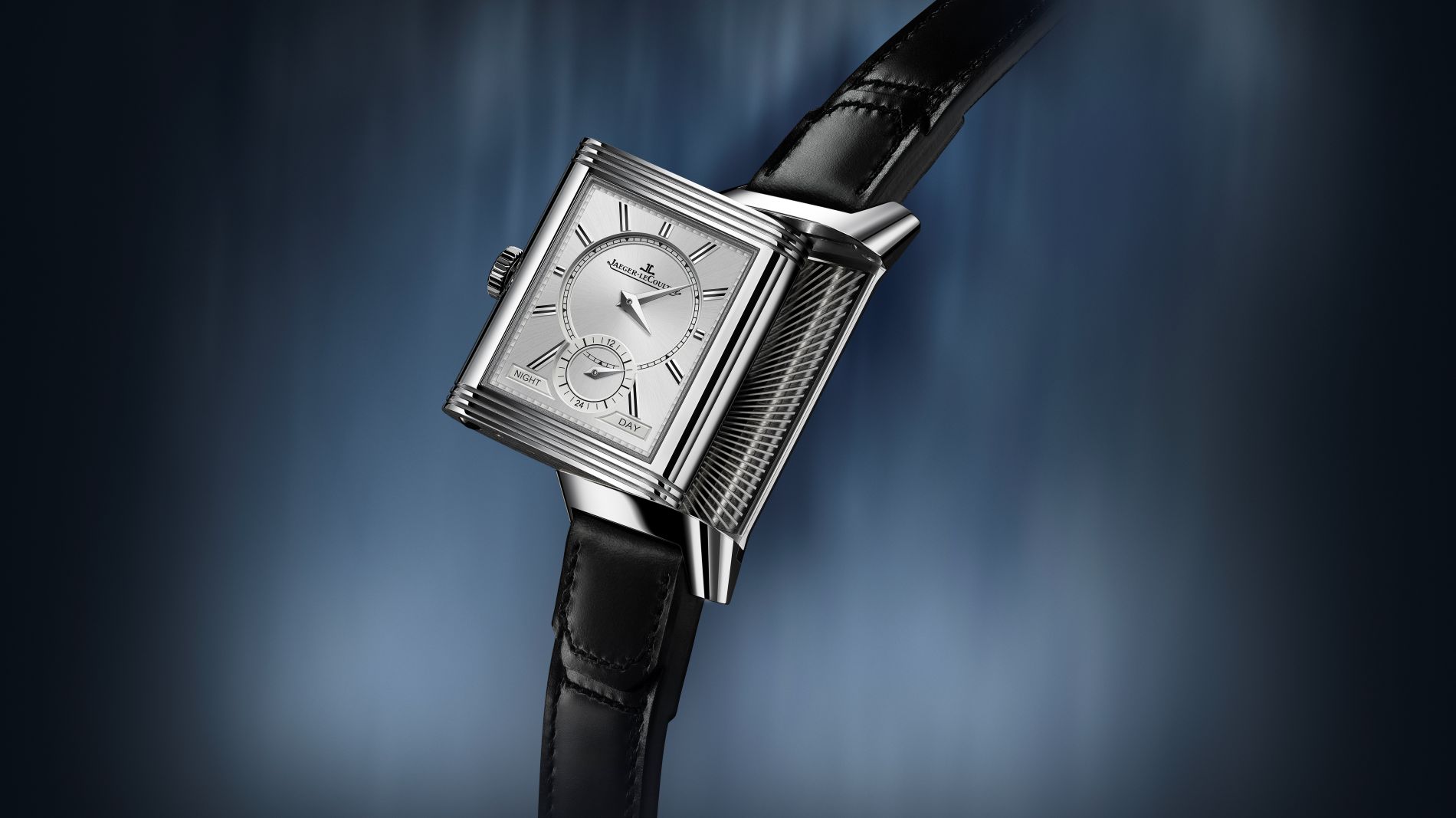
NEW DIAL COLOURS AND A PURE AESTHETIC PAY HOMAGE TO THE ORIGINAL 1930S REVERSO
Marrying the dual-time zone complication of the Duoface with the purified aesthetic of the Tribute collection, the two new Reverso Tribute Duoface Small Seconds are cased in steel – as were the earliest Reverso models. Less than a year after it created the Reverso, La Grande Maison introduced coloured dials made on demand, adding a note of exuberance to the streamlined design. These two new editions – with a sunray-brushed dial in pure black or vivid blue – pay homage to the black dials of the original 1931 Reverso and recall the early use of colour, further enriching the Reverso story. For the blue dial, the lacquering is a complex craft that requires a high degree of skill, achieved by applying 24 layers of coloured and transparent lacquer, which adds visual depth and permanently fixes the colour. Every layer is applied by hand and had to be meticulously dried before applying the next layer.
The signature iconography of the Reverso Tribute dial also recalls the purity of the 1930s original. The hours are marked by applied indexes rather than numerals. Their elongated shape and faceted profile add visual depth and echo the form of the Dauphine hands. The circular track of the small seconds display, at six o’clock, provides a counterpoint to the linear geometry of the dial and case.
Redesigned in a sleeker and more contemporary style, the reverse dial plays on the tension between circles and straight lines, unified by an overall sunray-brushed background that reflects constantly changing tones of silver as it catches the light. The double lines of the elongated indexes echo the three signature gadroons, above and below the dial, providing a strong visual anchor for the 24-hour sub-dial at 6 o’clock.
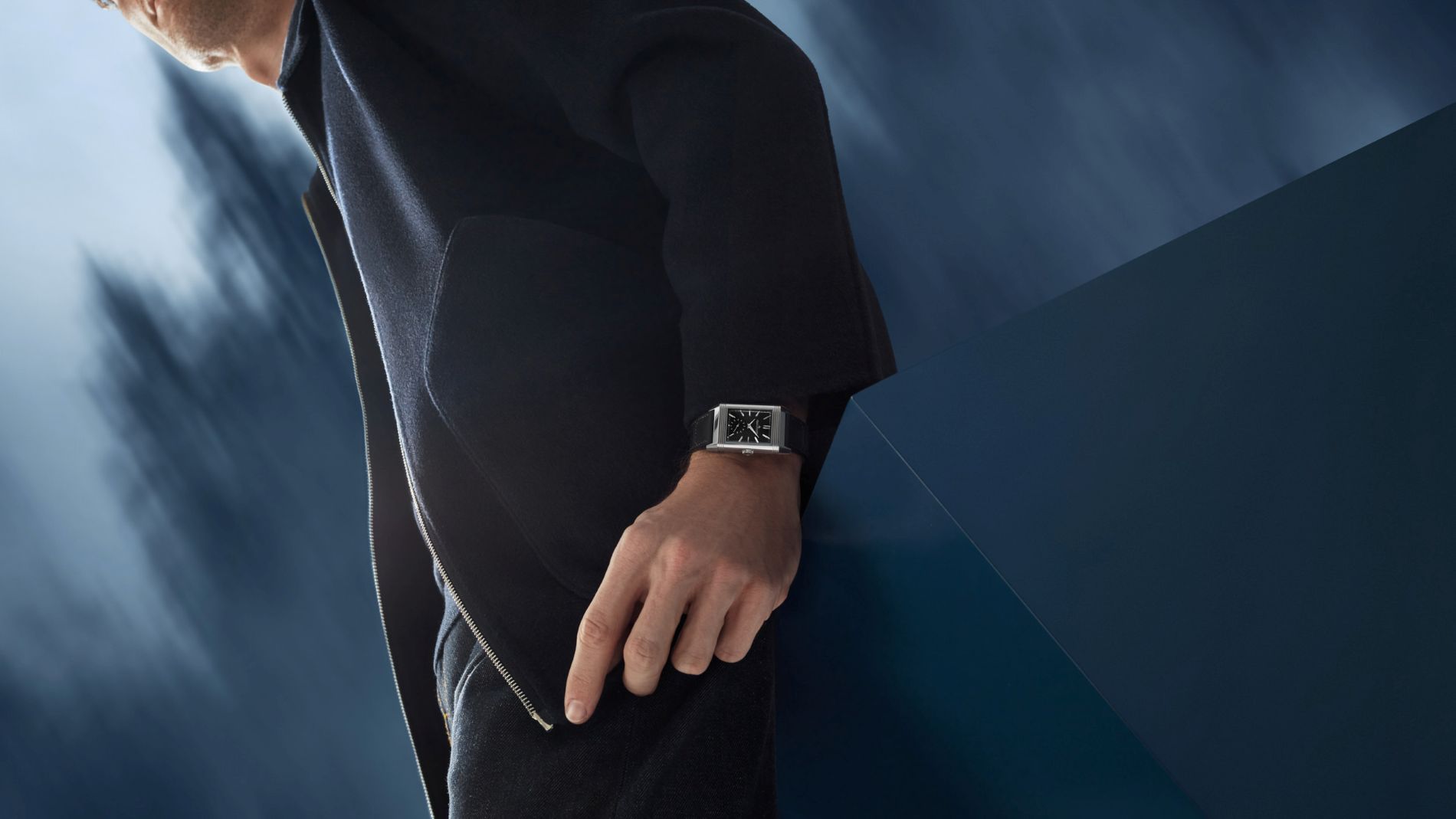
The two new Reverso Tribute Duoface Small Seconds models are presented with two interchangeable straps that match the dial colour. Designed by Casa Fagliano, the celebrated Argentinian maker of polo and riding boots, one combines leather and canvas – a style inspired by the canvas-and-leather boots that Casa Fagliano makes for summer polo – and one entirely in calf leather.
These new additions to the Reverso Tribute Duoface collection underline the great versatility of its Art Deco design, as Jaeger-LeCoultre unites timeless aesthetics with fine mechanics to create thoroughly modern watches that are destined to become enduring classics.

